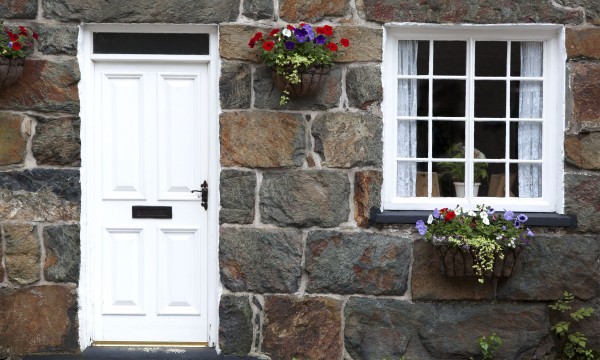Building a stone house takes work and there is a lot that goes into it from the mortar mix to your choice of stones. Here are professional suggestions to ensure you are using the right items.
- Browse Categories
- All Tips
-
Home & Garden
- All
- Appliances
- Bathroom
- Cleaning
- Crafts
- Decorating
- Electrical
- Flooring
- Furniture
- Garage Door
- Gardening
- Green Living
- Heating
- Home Alarm Systems
- Home Maintenance
- Home Remedies
- Home Security
- Home Staging
- House Sitting
- Junk Removal
- Kitchen
- Lawn Care
- Lock Systems
- Moving
- Outdoor Living
- Pest Control
- Plumbing
- Renovation
- Roofing
- Snow Removal
- Storage
- Tools
- Tree Service
- Health
- Family
- Travel
- Auto
- More Tips

Professional steps to building a stone home
July 29, 2015

Considerations when making your mortar
The basic ingredients to make mortar are cement, sand, gravel, lime putty, hydrated lime and water. Mortar can be adjusted to fit different needs so finding the right proportions of these key ingredients is important. Mortar for general, everyday work comprises one part cement and three parts sand with one-tenth of a part of lime. A lower cement-to-sand ratio is necessary in exposed areas.
The secret to strong mortar
Proper water content is what makes strong mortar. Too little makes the mortar unworkable but too much will make it weak. This is what you need to look out for to find that perfect amount.
- For a batch mixed from a 40-kilogram (88-pound) bag of cement, use 21 litres (5.5 gallons) of water, adjusting for the moisture content of the sand and gravel.
- Don't let concrete dry too fast.
- Slow curing will minimize the possibility of cracking while increasing the strength of the finished wall. Slow curing can be encouraged by draping the wall with wet hessian or sacking.
- Surfaces that cure well may need coating with a commercial bonding agent or a paste of Portland cement and water so that the next layer of mortar will form a good seal.
- Sand in mortar prevents excessive shrinkage and reduces the need for more-expensive lime or cement. Use pit, bank or riverbed sand for a good mortar.
- Sand should be free from dust, loam, large stones and vegetable matter.
- A combination of coarse and fine sands makes the strongest mortar for cementing rough stonework.
Strategies for choosing stones
- Manageable stones for slipforming should each weigh no more than about 20 kilograms (44 pounds) and have at least one fairly flat face.
- Stockpile a variety so you have plenty to choose from.
- Slope the top of each mortar pouring to the outside when raising a wall to prevent moisture-prone horizontal seams forming.
- Complete an entire course on one pour to avoid vertical through-seams that may weaken walls.
Now to keep yourself warm in a stone house
Stone is a poor insulator and joints often tend to develop small leaks. Here's what you can do to improve insulation in your stone house.
- Position the stones so they extend no more than two thirds of the way through the wall from the exterior to the interior. The inside face will then be smooth concrete, ready for insulation and paneling.
- If you want to display exposed stone in the interior, pace a 50-millimetre (two-inch) layer of insulation in the middle of the form and fill either side with stone and mortar.
The key to building a stone home is getting your mortar right and finding the right stones. These hints should give you a leg up on getting it right.






